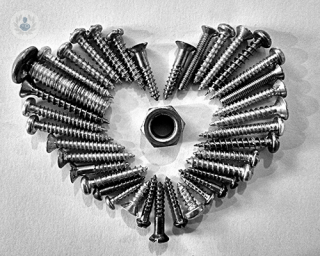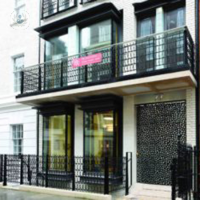Mitral valve repair
Mr Vivek Srivastava - Cardiothoracic surgery
Created on: 11-20-2019
Updated on: 09-18-2023
Edited by: Conor Lynch
What is the mitral valve?
The mitral valve is located between the two left heart chambers (i.e. the left ventricle and the left atrium). The purpose of the mitral valve is to control the flow of blood between the two chambers and to prevent blood from leaking backwards towards the lungs. Mitral valve disease describes conditions in which the mitral valve is no longer functioning correctly.

Types of mitral valve disease include:
- Mitral valve stenosis - the flaps of the mitral valve become stiff and hardened, narrowing the opening and reducing the flow of blood between the left heart chambers.
- Mitral valve regurgitation - when the flaps of the mitral valve don't close tightly enough, resulting in the leakage of blood back into the left atrium.
What is a mitral valve repair?
A mitral valve repair is an operation performed in order to make the flaps of one's mitral valve stay closer together. The procedure is carried out under general anaesthesia, so patients are fully asleep throughout the entirety of the operation.
When is a mitral valve repair required?
If patients experience breathlessness on a regular basis, notice a swelling of their limbs, and frequently find themselves out of breath after physical exertion, it usually means that the flaps of their mitral valve have been separated too much, resulting in blood flowing the wrong way through the mitral valve itself. The main aim of a mitral valve repair is to alter this, ensuring that the blood flows in the right direction again through the mitral valve.
What conditions can be treated by a mitral valve repair?
A mitral valve repair is mainly performed in order to treat mitral valve prolapse and mitral valve regurgitation. It can also help treat mitral valve stenosis.
How is a mitral valve repair performed?
Essentially, a mitral valve repair is open-heart surgery. The patient will be hooked up to a cardiopulmonary bypass machine. Then, the surgeon performing the mitral valve repair will either make a single cut along the middle of the patient's chest or smaller cuts between the ribs in order to access the heart.
Following this, the surgeon will proceed by placing an annuloplasty ring around the patient's valve. The final step sees the surgeon partially sewing the flaps of the mitral valve together. Once the operation has been completed, the surgeon will carry out a transoesophageal echocardiogram to check on the valve and to determine and evaluate the overall success of the mitral valve repair.
What does recovery from a mitral valve repair involve?
Following a mitral valve repair, patients will almost always be transferred to an intensive care unit for one or two days, where their pulse and breathing will both be constantly monitored. They will then be transferred back to a ward in the hospital, where they will remain for several more days. The majority of individuals who undergo a mitral valve repair stay in hospital for roughly a week after their operation.
What are the associated complications?
There are, unfortunately, quite a number of complications associated with mitral valve repair surgery. The main ones are:
- heart failure
- infection
- stroke
- arrhythmia
- bleeding
- heart block
What is the outlook like for people who have undergone a mitral valve repair?
Thankfully, a mitral valve repair is a very durable solution when it comes to effectively treating mitral valve disease. Most patients who undergo a mitral valve repair do not need to undergo another one after successful surgery. Some patients might require more than one though, and this of course depends on the severity of one's mitral valve disease.
The majority (95 per cent) can go up to at least 10 years without requiring another mitral valve repair, whilst around 90 per cent can go up to 20 years before requiring another one.
Is a mitral valve repair potentially life-threatening?
Yes. There is, unfortunately, a small risk of death when one undergoes a mitral valve repair. 1 in 1,000 people pass away as a result of a mitral valve repair. Your healthcare provider will only advise you to undergo this surgery if they feel as though the benefits outweigh the risks.
















